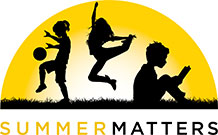After 3pm: Special Report on Summer
This data-rich report looks at how children spend the hours from 3-6pm, the period after school but before parents come home from work.
The analysis and reports describe the common activities for kids including participation in afterschool programs.
The report finds that there is still room for expansion despite steady growth in program participation. It also identifies common barriers to greater enrollment of low-income children, and discusses the gap in the variety and depth of programs offered to middle-income students versus low-income students.
Read the full report to learn about the benefits of afterschool programs, what can be done to improve them, and where more support is needed.
Visit http://www.afterschoolalliance.org/AA3PM/ to view the reports and data

